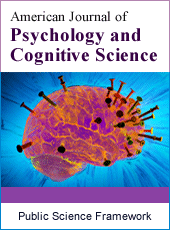American Journal of Psychology and Cognitive Science
Articles Information
American Journal of Psychology and Cognitive Science, Vol.1, No.4, Oct. 2015, Pub. Date: Nov. 5, 2015
Child Criminalization at Slum Areas in Dhaka City
Pages: 107-111 Views: 4603 Downloads: 2559
[01]
Md. Kamruzzaman, Department of Criminology and Police Science, Faculty of Life Science, Mawlana Bhashani Science and Technology University, Santosh, Tangail, Bangladesh.
[02]
Md. Abdul Hakim, Department of Food Technology and Nutritional Science, Faculty of Life Science, Mawlana Bhashani Science and Technology University, Santosh, Tangail, Bangladesh.
The study was conducted in Dhaka city, the capital of Bangladesh taking 65.7% boys and 34.3% girls using simple random sampling method. There were observed to have 77.8% daily conflicting between their parents tends themselves into various illicit deeds like (42.6%) drug abuse, (10.2%) hijacking and (32.4%) theft. Some 34.3% respondents were involved with different crime influenced by bad peer groups and 26.9% by dint of poverty coming from joint (59.3%) as well as nuclear families (40.7%). About 43.5% respondents get frustrated due to insufficient basic needs with 66.7% stopping study for poverty while 49.1% were illiterate fellows involved in criminalities keeping company with (64.8%) bad peers, (14.8%) hijackers and (10.2%) with the drug dealers and terrorists.
Child Criminalization, Slum Areas, Dhaka City
[01]
www.oxforddictionaries.com/definition/english/child, Retrieved on 13 September 2015.
[02]
Convention on the Rights of the Child, 1989, http://www.ohchr.org/en/professionalinterest /pages/crc.aspx.
[03]
Amster, Randall (2008). Lost in Space: The Criminalization, Globalization, and Urban Ecology of Homelessness. New York: LFB Scholarly. ISBN1 -59332-297-6.
[04]
Penal Code, 1860, http://bdlaws.minlaw.gov.bd.
[05]
http://www.merriam-webster.com/dictionary/slum.
[06]
UN-HABITAT 2007 Press Release on its report, "The Challenge of Slums: Global Report on Human Settlements 2003".
[07]
State of the World's Cities Report 2012/2013: Prosperity of Cities" (PDF). UNHABITAT. Retrieved 13 September 2015.
[08]
Mike Davis, Planet of Slums [« Le pire des mondes possibles: de l'explosion urbaine au bidonville global »La Découverte, Paris, 2006 (ISBN 978-2-7071-4915-20.
[09]
5 Biggest Slums in the World, International Business Times, Daniel Tovrov, IB Times (December 9, 2011).
[10]
Craig Glenday (Editor), Guinness World Records 2013, Bantam, ISBN 978-0-345-54711-8; see page 277.
[11]
UN Report, 1998.
[12]
Center for Urban Studies, Dhaka, 1996, www.cusdhaka.org, retrieved on 13 September 2015.
[13]
SLUMS OF THE WORLD: THE FACE OF URBAN POVERTY IN THE NEW MILLENNIUM? ISBN 92-1-131683-9, UN-Habitat.
[14]
Bright City Lights and Slums of Dhaka city Ahsan Ullah, City University of Hong Kong (2002).
[15]
Socio-demographic determinants and prevalence of Tuberculosis knowledge in three slum populations of Uganda Ekwaro Obuku et al, BMC Public Health 2012, 12:536.
[16]
Babinski, L. M., Hartsough, C. S., & Lambert, N. M. (1999). Childhood conduct problems, hyperactivity-impulsivity, and inattention as predictors of adult criminal activity. The Journal of Child Psychology and Psychiatry and Allied Disciplines, 40, 347-355.
[17]
Soderstrom, H., Sjodin, A-K., & Carlstedt, A. (2004). Adult psychopathic personality with childhood-onset hyperactivity and conduct disorder: A central problem constellation in forensic psychiatry. Psychiatry Research, 121, 271-280.
[18]
Pratt, T. C., Cullen, F. T., Blevins, K. R., Daigle, L., & Unnever, J. D. (2002).
[19]
The relationship of attention deficit hyperactivity disorder to crime and deliquency: A meta-analysis. International Journal of Police Science & Management, 4, 344-360.
[20]
Siegel, L. J., Senna, J. J. (2004). Essentials of criminal justice (4th ed.). New York: Wadsworth.
[21]
Ram Deo Chauhan,Rajnath Chauhan v. State of Assam (2001) 5 SCC 714, Supreme Court of India.
[22]
Ghodsian-Carpey, J. Baker, L. A. (1987). Genetic and environmental influences on aggression in 4- to 7-year-old twins. Aggressive Behavior, 13, 173-186.
[23]
National Report of Bangladesh on ‘Global Study on Child Poverty and Disparities’; UNICEF, 2009.
[24]
Eckstein, Susan. 1990. Urbanization Revisited: Inner-City Slum of Hope and Squatter Settlement of Despair. World Development 18: 165–181.
[25]
www.dhakatribune.com/bangladesh/2014/nov/18/study-half-urban-population-bangladesh-slum-dwellers#sthash.rAh75COc.dpuf.
[26]
Goldson, B. (1997) ‘Children in trouble: state responses to juvenile crime’ in P. Scraton (ed.) ‘Childhood’ in ‘Crisis’? London, UCL Press.
[27]
Pajer, K. A. (1998). What happens to "bad" girls: A review of the adult outcomes of antisocial adolescent girls. American Journal of Psychiatry, 155, 862-870.
[28]
osephine Slater (2009), Naked Cities - Struggle in the Global Slums, Mute, Volume 2, Issue 3, ISBN 0-9550664-3-3.
[29]
Brueckner, Jan K.; Harris Selod (2009). "A theory of urban squatting and land-tenure formalization in developing countries". American Economic Journal: Economic Policy: 28–51.
[30]
Moffitt, T. E. (1993b). The neuropsychology of conduct disorder. Development and Psychopathology, 5, 135-151.
[31]
Miles, D. R., & Carey, G. (1997). Genetic and environmental architecture of human aggression. Journal of Personality and Social Psychology, 72, 207-217.
[32]
Save the Children UK (February 2003). Suffering in silence the plight of Kampala’s children, An operational study for Save the Children UK. Child participation pilot project in Central Division Kampala.
[33]
Foley, H. A., Carlton, C. O., & Howell, R. J. (1996). The relationship of attention deficit hyperactivity disorder and conduct disorder to juvenile delinquency: Legal implications. Bulletin of the American Academy of Psychiatry Law, 24, 333-345.
[34]
Bandman, B. (1999) Children's Right to Freedom, Care and Enlightenment. Routledge. p 67.
[35]
Pachauri, S. K. (1999), Children and Human Rights, New Delhi: A P H Publishing Corporation.
[36]
Dabir, Neela and Athale, Naina (2011), From Street to Hope, New Delhi: Sage.

ISSN Print: 2381-7453
ISSN Online: 2381-747X
Current Issue:
Vol. 6, Issue 2, June Submit a Manuscript Join Editorial Board Join Reviewer Team
ISSN Online: 2381-747X
Current Issue:
Vol. 6, Issue 2, June Submit a Manuscript Join Editorial Board Join Reviewer Team
| About This Journal |
| All Issues |
| Open Access |
| Indexing |
| Payment Information |
| Author Guidelines |
| Review Process |
| Publication Ethics |
| Editorial Board |
| Peer Reviewers |


